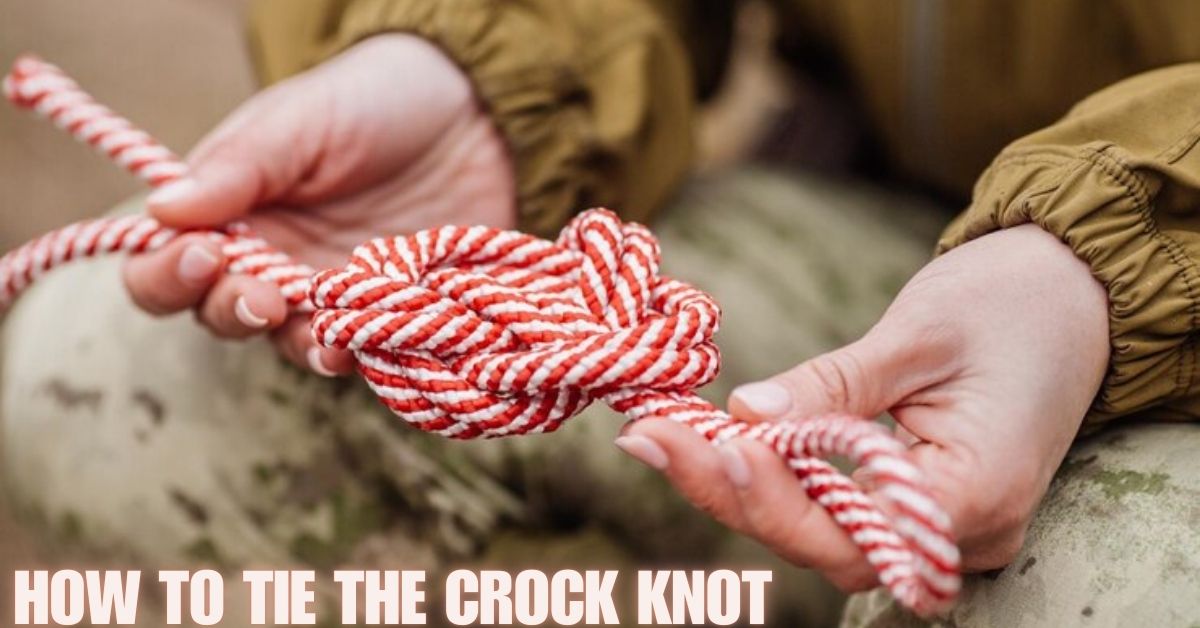Crock Knot: The Reliable Knot for Outdoor Adventures

The Crock Knot is a strong and versatile knot trusted by outdoor enthusiasts for many purposes. It holds securely under tension yet remains easy to untie, making it popular for activities like camping, boating, and hiking. In this article, we’ll explore the history, uses, and techniques for tying the Crock Knot, explaining why it’s essential for outdoor enthusiasts.
History of the Crock Knot
The Crock Knot comes from maritime traditions where sailors needed reliable knots to secure cargo, sails, and rigging on ships. Over time, this knot moved beyond the sea, finding a place in camping, climbing, and survival activities. Its strength and versatility make it one of the most widely used knots today.
You Might Also Like: Chaleturi: Your Guide to Alpine Getaways
Why the Crock Knot Stands Out
What makes the Crock Knot unique is its balance between security and ease of use. When tied correctly, it tightens under pressure, preventing slippage. Yet, even after being exposed to heavy loads, it remains simple to untie. This feature is essential when you need a knot that won’t jam, especially in outdoor or survival settings.
Uses of the Crock Knot
The Crock Knot has various applications, from marine use to camping and survival situations. Let’s explore the most common ways this knot is used.
Boating and Sailing
In boating, It is trusted to secure ropes, anchors, and gear, especially in wet or slippery conditions. Its ability to hold fast even when exposed to water makes it essential for sailors.
Camping and Hiking
Campers use it to tie tents, hammocks, and tarps. It’s strong enough to withstand wind and rain, making it an excellent choice for securing shelters or heavy loads while hiking or camping.
Climbing
While not as commonly used as other knots in climbing, the Crock Knot can be applied for securing gear or anchoring. Its stability under pressure makes it a good option for static loads in climbing and mountaineering.
Survival Situations
In survival scenarios, the Crock Knot can be used for building shelters, securing food, or creating traps. Its reliability ensures that it will hold under harsh conditions, providing an essential tool for those facing the wilderness.
How to Tie the Crock Knot
Tying the Crock Knot is simple once you understand the steps. Here’s a basic guide to help you master this knot.
Step 1: Create a Loop
Start by creating a loop in your rope. This loop will be the foundation for the rest of the knot.
Step 2: Pass the End Through
Take the working end of the rope and pass it through the loop you’ve created.
Step 3: Wrap Around
Wrap the working end around the standing part of the rope at least twice to secure the knot.
Step 4: Secure
Tuck the working end back through the loops and pull it tight. Adjust the tension and ensure the knot is properly fastened before applying any load.
Benefits of the Crock Knot
The Crock Knot has several advantages, making it a top choice for various outdoor activities.
Strong Under Tension
The knot tightens under pressure, making it ideal for holding heavy loads securely, even in challenging environments like rain or snow.
Easy to Untie
Despite its strength, the Crock Knot is easy to untie. This feature is valuable when you need to adjust or remove the knot quickly in dynamic situations.
Adaptable to Multiple Uses
From boating to hiking, It can be used for almost any outdoor task, making it highly adaptable.
Reliable in Wet Conditions
Thanks to its design, the knot holds firm in wet or slippery conditions, making it perfect for activities near water, like fishing or kayaking.
Drawbacks of the Crock Knot
While it is excellent, it does have some limitations.
Learning Curve
It can be a bit tricky for beginners to learn. However, with some practice, the knot becomes much easier to tie.
Not Ideal for Dynamic Loads
It is best suited for static loads. It may not be the best option when the load changes frequently, such as in climbing.
Conclusion
The Crock Knot is an incredibly useful knot that should be in every outdoor enthusiast’s toolkit. Whether you’re camping, sailing, or in a survival situation, knowing how to tie this knot can be invaluable. Its balance of strength, versatility, and ease of use makes it a top choice for many outdoor activities.
FAQs
What is the Crock Knot used for?
It is commonly used in outdoor activities such as camping, hiking, boating, and survival situations. It is ideal for securing tents, hammocks, tarps, ropes, and gear.
Is the Crock Knot difficult to learn?
While it can be challenging for beginners, with practice, it becomes easier to master. The steps are straightforward once you get the hang of them.
Can the Crock Knot hold in wet conditions?
Yes, He is known for its excellent performance in wet and slippery conditions, making it ideal for use in boating, fishing, or other water-based activities.
What are the advantages of using the Crock Knot?
It is strong under tension, easy to untie, versatile for multiple uses, and reliable in harsh weather conditions. These qualities make it a favorite among outdoor enthusiasts.
Can I use the Crock Knot for climbing?
While it can be used for securing gear in climbing, It is not typically recommended for dynamic loads that shift frequently, like those encountered during climbing activities. Other knots may be better suited for that purpose.



